Life in the Native American oil protest camps
- Published

Peter Francis, of the Sioux people, has spent a week hauling iron pots between a holding tank and an open fire to maintain a continuous flow of boiling water for tea and cooking. He is staying in the Oceti Sakowin Camp, one of two enormous gatherings of Native American people near the Cannonball River, in the US state of North Dakota. He stands, united, in protest against an oil pipeline. "This is about water," he said, referring to the protest. "Water is the life of our people. Without it, we cannot exist."

The Oceti Sakowin Camp is situated in a remote corner of the Standing Rock Sioux Reservation, near the confluence of the Missouri and Cannonball rivers. The multi-billion dollar oil pipeline the campers are opposing is slated to pass beneath the Missouri, just north of Standing Rock. The protesters say the pipeline will despoil a number of sacred sites in the area, including the flooded forest pictured here, which used to be a burial ground. The bleached trees are said to be the skeletons of Lakota Dakota spirits.
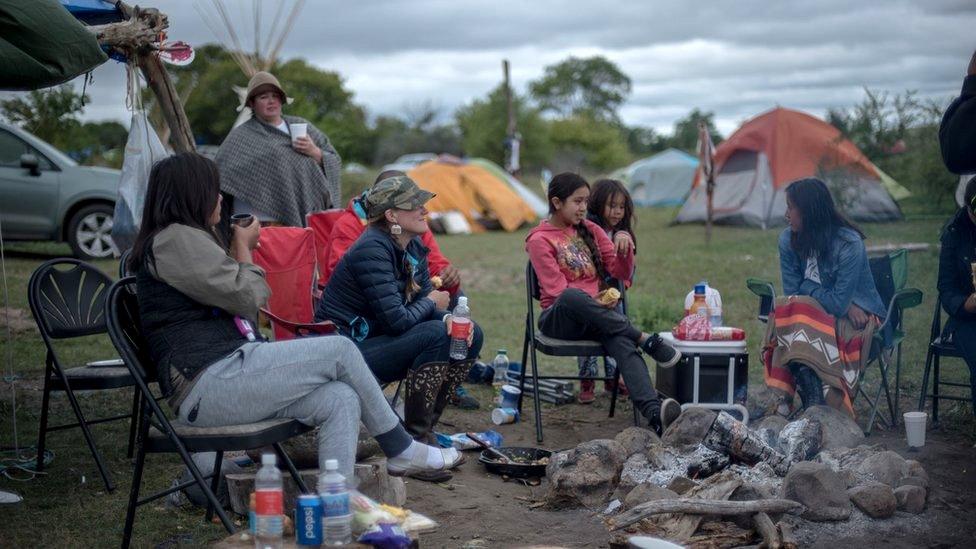
Life in the camps is often quiet. Whole families have based themselves there, having driven from as far afield as Maine and Arizona - hundreds of miles across America. Hours are spent around camp fires, sharing stories and food. Traditional Native American staples are on the menu, including sweet corn, peppers, beans and fry bread, which is eaten sweet and savoury.
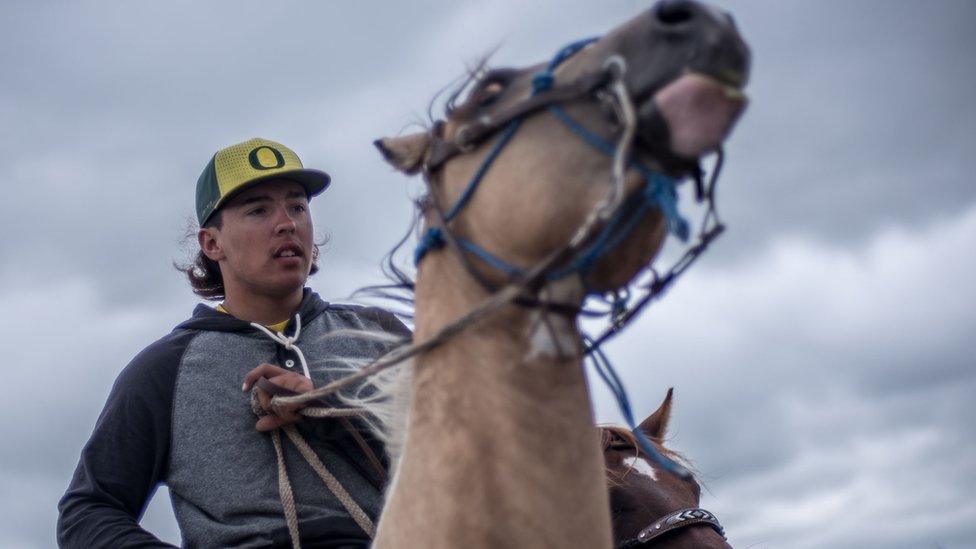
A cohort of young men patrol the Oceti Sakowin Camp calling themselves "spirit riders." They spend most of their time running errands and delivering messages. They are excellent riders, often going bareback, sometimes without reins, occasionally galloping in the nearby floodplain. The Sioux people have a long history of horsemanship, defeating the US army repeatedly in pitched horse battles in the 1800s - most famously at the Battle of Little Bighorn, where the invading cavalry commander George Custer was killed.
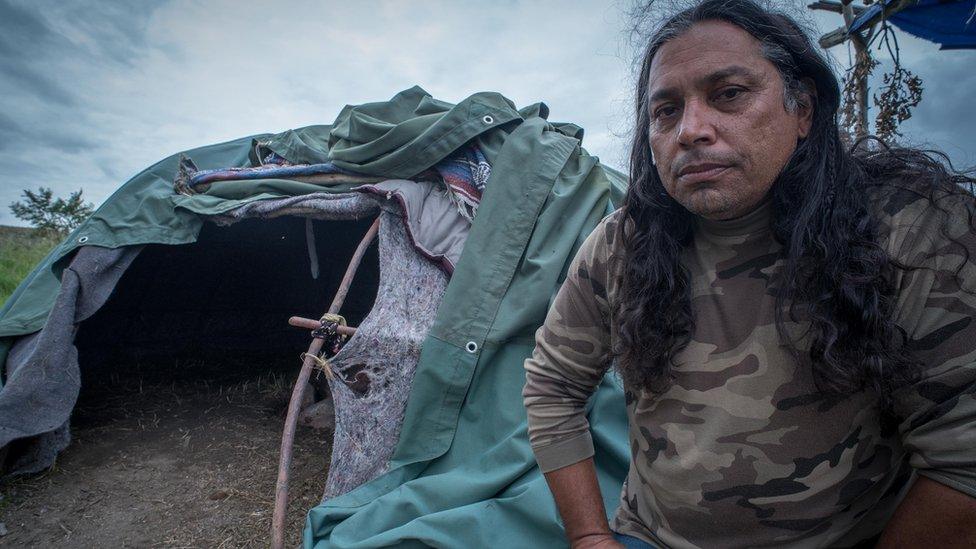
Hawste Wakiyan Wicasa believes the Native American standoff with Dakota Access is the last Great Indian War. "This is the first time the seven bands of the Sioux have come together since Little Bighorn," he said. "Now, we have no weapons, only prayers." Mr Wicasa says he prays every morning and every night in the sweat lodge pictured behind him. "We are here for what our ancestors fought and died for. We have endured 250 years of betrayal by the white man."

The company behind the oil pipeline, Dakota Access LLC, says it will create thousands of jobs and generate over $40m (£30.5m) in tax revenue for the state of North Dakota. Seven counties will be traversed in total, in addition to the states of Iowa, Illinois and South Dakota. The pipeline will follow the line of the power cables visible in the backdrop of this picture, as seen from the outer edge of the Oceti Sakowin Camp.
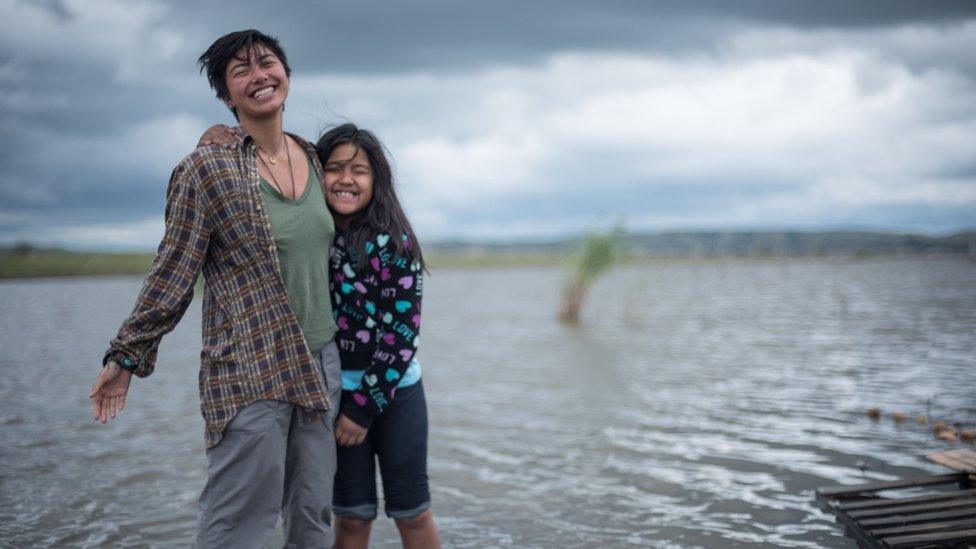
Amihan, 19, pictured here with a friend she made in the Sacred Stone Camp, drove from Ohio to participate in the protest. Many protesters have been living in the camps for weeks, but some are just passing through. Standing Rock has seen hundreds of young indigenous people and activists visit, eager to take part in the historic gathering. Over 80 different tribes have a presence in the area.
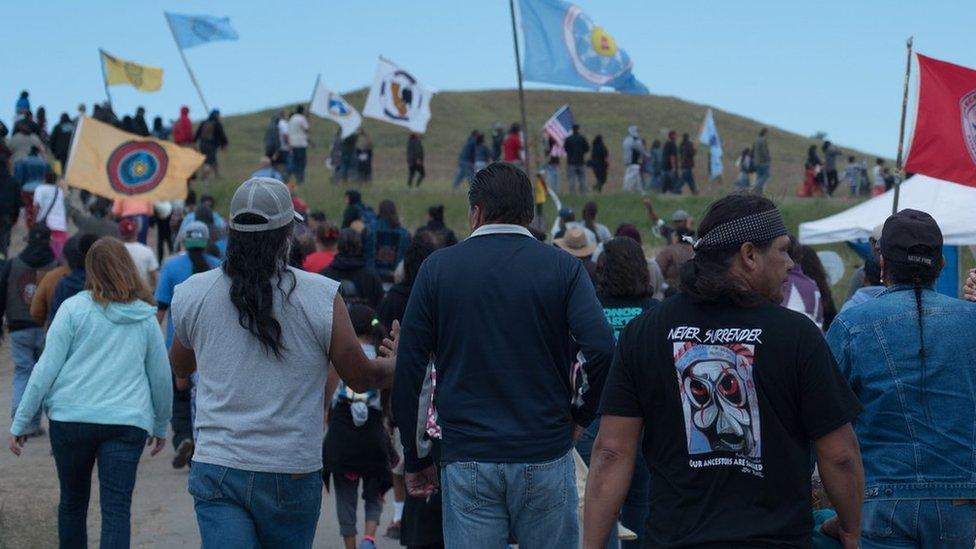
On most days, demonstrations take place along the road leading to the Dakota Access pipeline construction site. Participants wave flags representing different tribal nations. In some cases, they obstruct trucks and diggers approaching the pipeline. Over 20 Native American protesters have been arrested in the month of August, including the chairman of the Standing Rock Sioux Tribe, David Archambault II.
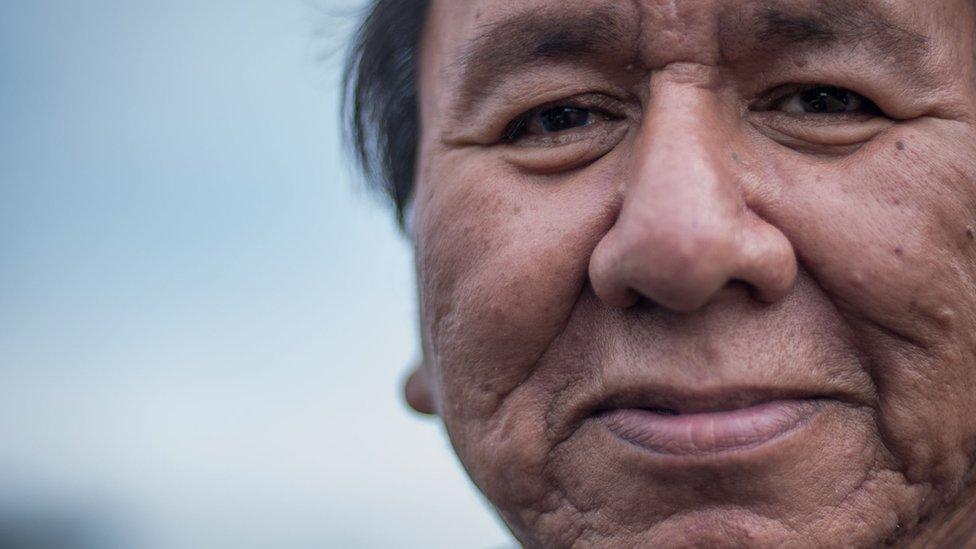
Pancho, pictured here, is from the Standing Rock Reservation. He has been protesting against the pipeline since April, and worries the camps are becoming overcrowded and that local supplies are overstretched. "We know this place can't handle many more people," he said, standing in the Sacred Stone Camp. "Resources are stretched. Our community does not have a lot of money."
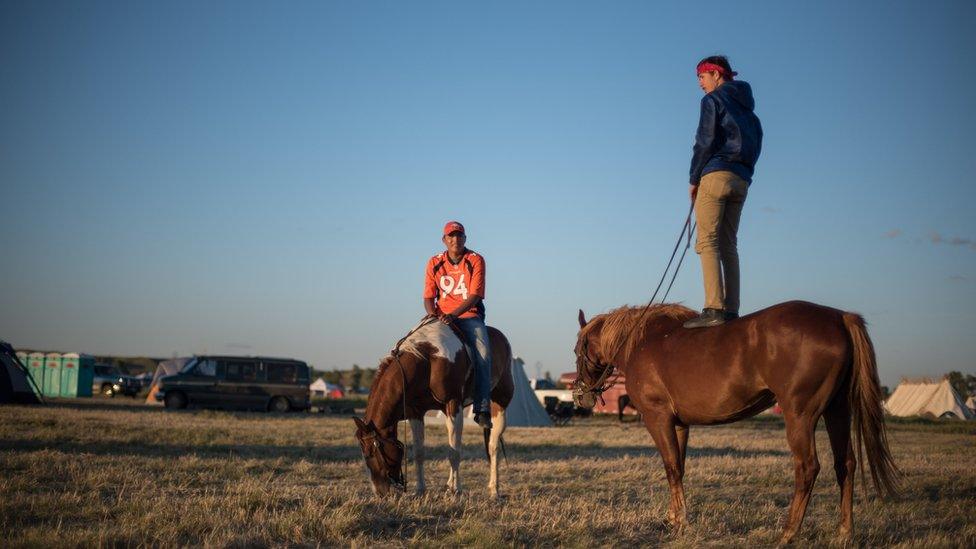
Clyde Bellecourt is one of the founders of the American Indian Movement, a significant civil rights group in the 1960s and 70s. In all his days fighting for Native American rights, he says he has never seen anything like the camps. "I am 80 years old," he said. "I've been jailed, I've been shot. This is the most beautiful thing I have ever seen. This is what I fought for."
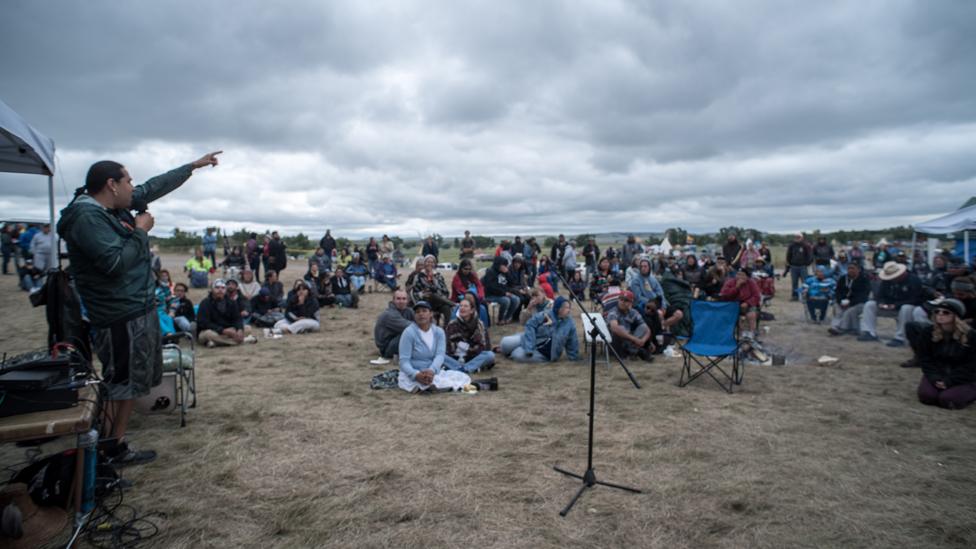
At the centre of the Oceti Sakowin Camp is a microphone, and at night, a blazing fire. Anyone can stand up and speak or sing. Here, Dallas Goldtooth, an organiser for the Indigenous Environmental Network, delivers a speech about camp logistics. "The porta potties [toilets] are the most expensive things here," he said, to a chorus of laughter. "Please do your stuff neatly."

For children, the protest camps are a playground of excitement. Dogs run wild, horses are available to be ridden. The two camps are close to the river, which offers relief in the humidity of summer.
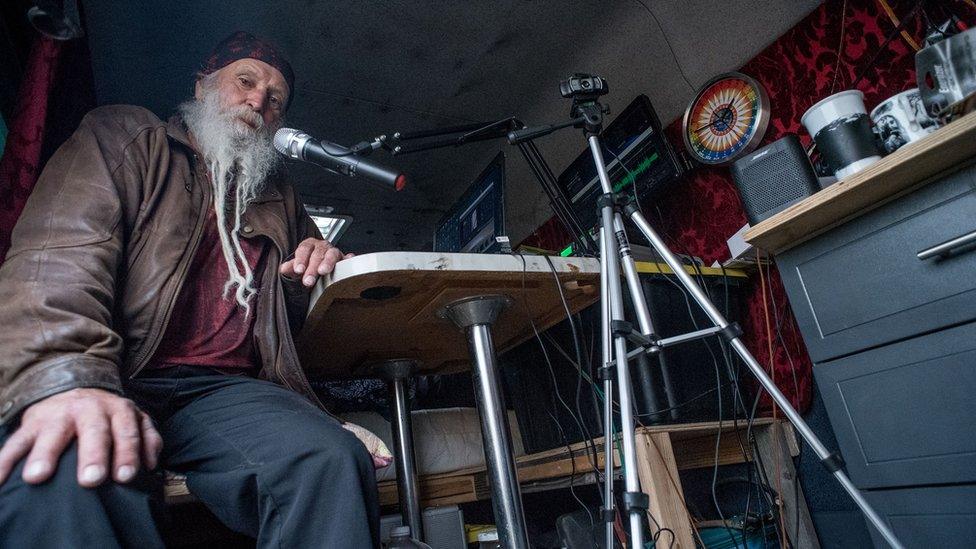
Govinda Dalton is one of an older generation of environmental activists living in the camp. He runs Spirit Resistance Radio 87.9 out of his white van. Social media use by young Native Americans has been the driving force behind the growth of the protest, led by hashtags like #waterislife, #NoDakotaAccess and #nodapl. Instagram and Facebook have been the most popular mediums, but Twitter is also being used. "This is what it's about man," said Mr Dalton.
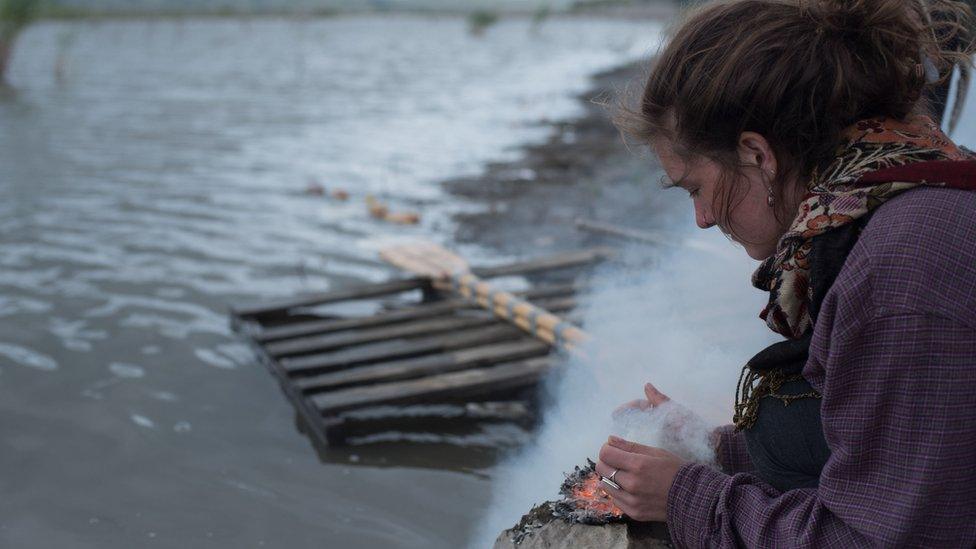
Sacred ceremonies, many of them private and closed to outsiders, are part of the everyday life of the camp. Each tribe brings its own set of customs, but many find common ground with songs, chanting and pipe-smoking rituals. Here Chloe Piepho says a prayer to Mni Wiconi, the sacred waters of life, in the Lakota Sioux language.

Johnelle, pictured front, is always in a rush. She is the emergency response coordinator for the Standing Rock Sioux tribe. She runs a logistics team, with finance, medical and media officers. Looking out for the lives of thousands of visitors has been a challenge, but she relishes it. "If we find out there is something people need," she said, "whether it be food, soap or medical supplies, we will find it for them."

The human rights organisation Amnesty International, pictured here interviewing Ladonna Brave Bull, is investigating whether Native American liberties have been infringed. Local law enforcement have blocked a major road to and from the Red Warrior Camp, citing the interest of public safety. Residents of the camp say the blockage prevents them from picking up basic supplies from their nearest city, Bismarck.
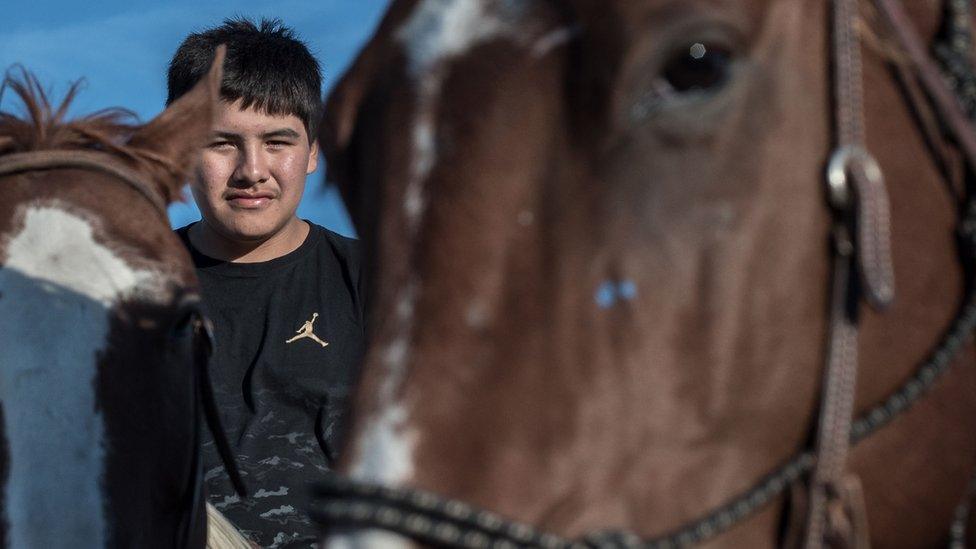
Security, cleaning and cooking are all handled by volunteers in the two protest camps. Some of have been told to keep track of the media, who are scantly trusted. "We don't bother them," said Xavier Long Feather, a 17-year-old volunteer on the security team. "But it's good to keep watch, to see who is here."
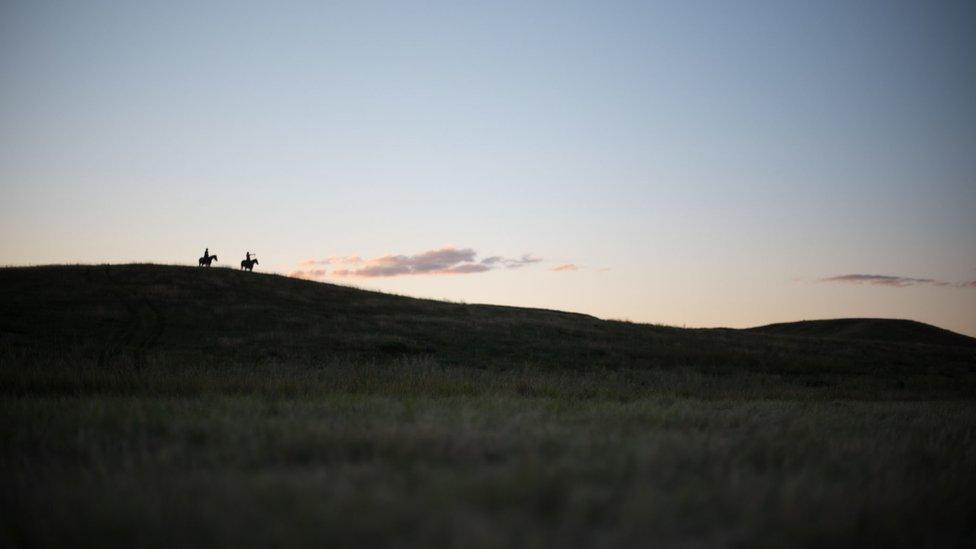
On 9 September, a major decision will be made regarding the Oceti Sakowin Camp and its protesters. A judicial court will decide whether the Dakota Access pipeline should proceed, or be halted for further environmental and archaeological assessments. "This is the biggest gathering of its kind in history," said Keith Lussier, on the camps. "We will stand our ground if we have to."